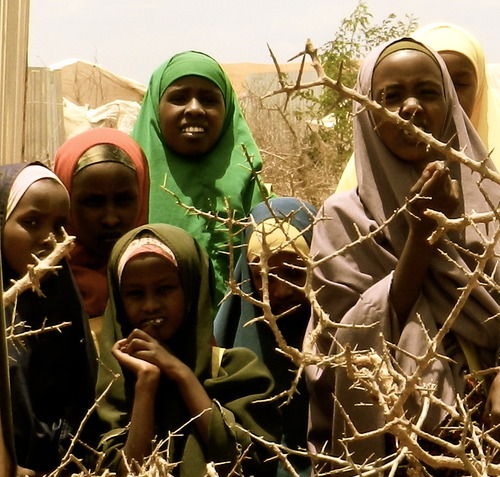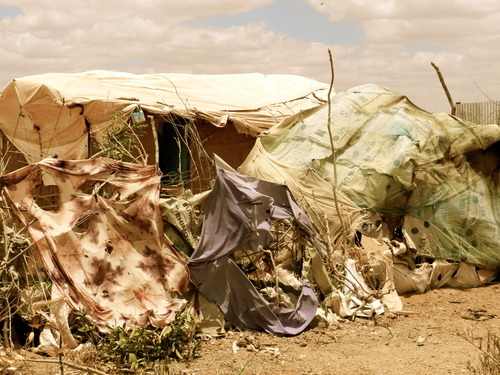Only 60 miles (2 hours of very bumpy, volatile road by car) to the Somali border, Dadaab is home to some 600,000 refugees from Somalia, despite being built to hold a maximum of 90,000. For the past 24 years, this refugee camp has been collecting those fleeing their unstable and violent country to the northeast, most making the trek on foot against unimaginable obstacles, from some of the worst famines seen in modern history, to starvation, massacre, and sexual atrocities. Stories of mothers being forced to abandon weak children along the way to gamble on the hope that the stronger ones will make it across the border are so common that they no longer qualify as sound bites to journalists.

The refugee camp has been operating for so many years now, that there are those who are classified as third generation – although they indeed were born in the camps, so were their parents, and even grandparents. The math to this is of course troubling, as is the product. For all of these inhabitants born into the camp, all they know of securing a meal is standing in a line. All they know of health care is standing in a line.
I visited Dadaab with Abbas Gullet, Secretary General of Kenya Red Cross. The purpose was to, in accompanying Kenya Red Cross on an update assessment, garner an idea of the basic standards of living and education within the camps, as the Foundation is considering donating books to the schools. It is an odd place, both with the functionality of a burgeoning (albeit horribly poor) community, and also the palpable insecurity of the unknown, reverberating so strongly due to the ambushes, kidnappings, grenades, and bombs that have been executed by al Shabaab , targeted at international NGOs, and now even Kenyan Police, guilty of protecting those NGO workers venturing into the camps.

As a fundamental believer in the importance of education to end the poverty cycle, the numbers are unsettling. Upwards of 150 students to a teacher in the primary schools, which over a thousand students each, and yet only go to Standard 4 (grade four). There are no books. Despite free primary education as a guarantee by the Kenyan Government, these are not Kenyans, they are refugees, and as such the Kenyan Government does not fund any part of Dadaab. Because of this, it falls on the NGO’s, but priorities have, justifiably, been food, vaccines, and the most basic of necessities to keep infectious diseases and chronic illnesses at bay. In most classes, there is only one textbook for 150 students, kept by the teacher. There are only a few token secondary schools in the entire camp, but no academic materials. Learning simply cannot take place in an environment like this. Dadaab needs books and learning resources, and hopefully there is a role, however small, that the Foundation can play in addressing this.